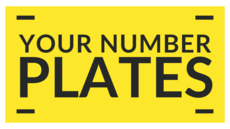1. Introduction – The Overlooked Role of Number Plates in MOT Tests
When drivers think of MOT tests, they often picture brake inspections, emissions checks, and tyre tread measurements. Yet something as simple as a number plate can make or break the result. A plate that fails to meet legal standards risks more than just aesthetics—it can result in a failed certificate.
2. Why Number Plates Are Assessed During an MOT
The MOT ensures vehicles are roadworthy and legally compliant. Number plates are a core element of identification, enabling law enforcement, ANPR cameras, and other drivers to recognise the vehicle. If a plate is unclear or illegal, it compromises this fundamental purpose.
3. Legal Standards for UK Number Plates
The DVLA sets strict regulations for plates in the UK. They must meet British Standard BS AU 145e, display the correct supplier details, and follow rules for material, durability, and reflectivity. An MOT inspector will check for adherence to these standards.
4. Visibility and Legibility Requirements
Characters must be visible from a reasonable distance in daylight and when illuminated at night. If grime, fading, or damage obscures characters, the plate is deemed non-compliant. MOT testers will often fail plates that are difficult to read from the required distance.
5. Damage, Wear, and Material Integrity Checks
Cracks, delamination, severe fading, and peeling can all compromise a plate’s function. During an MOT, plates are inspected for physical integrity, ensuring they can withstand daily road conditions without deteriorating into illegibility.
6. Correct Colour and Reflectivity Compliance
The law mandates black characters on a white background for the front and on a yellow background for the rear. Both must be retroreflective, aiding visibility at night. Any tinting, background patterns, or loss of reflectivity will cause problems during the test.
7. Font, Size, and Spacing Regulations
Plates must use the Charles Wright typeface, with characters 79mm high, 50mm wide, and proper spacing—11mm between characters and 33mm between registration groups. Incorrect spacing, misaligned characters, or non-standard fonts can lead to immediate failure.
8. The Impact of Non-Compliant Plates on MOT Results
A plate that does not meet regulations will result in a fail. Even minor deviations, such as misplaced screws obscuring a digit, are taken seriously. Without a valid MOT, you cannot legally drive your vehicle, and insurance cover may be affected.
9. Common Reasons Number Plates Fail MOT Tests
Frequent causes include excessive dirt, cracked acrylic, faded characters, incorrect spacing, unauthorised fonts, missing British Standard marks, or use of decorative “show plates” on public roads.
10. How to Prepare Your Plates Before an MOT
Clean plates thoroughly before the test. Check for chips, cracks, and fading. Ensure all characters are unobstructed by frames or screws. If in doubt about compliance, measure spacing and confirm the presence of the BS AU 145e mark.
11. Replacing Plates After a Failure – The Legal Process
If your vehicle fails due to plates, replacements must be sourced from a DVLA-registered supplier. You will need to present proof of identity and entitlement to the registration before new plates are issued.
12. Conclusion – Keeping Plates Roadworthy Year-Round
Number plates may be small, but they carry significant weight in MOT compliance. By maintaining them to legal standards year-round, you not only avoid test failures but also uphold safety and identification standards that keep UK roads orderly and secure.

